I'm trying to solve these two integrals, I want to use a numerical approach because C_i will eventually become more complicated and I want to use it for all cases. Currently, C_i is just a constant so _quad is not able to solve it. I'm assuming because it is a Heaviside function and it is having trouble finding the a,b. Please correct me if I'm approaching this wrongly.
Equation 33
In [1]: import numpy as np
...: import scipy as sp
...: import sympy as smp
...: from sympy import DiracDelta
...: from sympy import Heaviside
In [2]: C_i = smp.Function('C_i')
In [3]: t, t0, x, v = smp.symbols('t, t0, x, v', positive=True)
In [4]: tot_l = 10
In [5]: C_fm = (1/tot_l)*v*smp.Integral(C_i(t0), (t0, (-x/v)+t, t))
In [6]: C_fm.doit()
Out[6]:
0.1*v*Integral(C_i(t0), (t0, t - x/v, t))
In [7]: C_fm.doit().simplify()
Out[7]:
0.1*v*Integral(C_i(t0), (t0, t - x/v, t))
In [8]: C_fms = C_fm.doit().simplify()
In [9]: t_arr = np.arange(0,1000,1)
In [10]: f_mean = smp.lambdify((x, v, t), C_fms, ['scipy', {'C_i': lambda e: 0.8}])
In [11]: try2 = f_mean(10, 0.1, t_arr)
Traceback (most recent call last):
File "/var/folders/rd/wzfh_5h110l121rmlxn61v440000gn/T/ipykernel_3164/3786931540.py", line 1, in <module>
try2 = f_mean(10, 0.1, t_arr)
File "<lambdifygenerated-1>", line 2, in _lambdifygenerated
return 0.1*v*quad(lambda t0: C_i(t0), t - x/v, t)[0]
File "/opt/anaconda3/lib/python3.9/site-packages/scipy/integrate/quadpack.py", line 348, in quad
flip, a, b = b < a, min(a, b), max(a, b)
ValueError: The truth value of an array with more than one element is ambiguous. Use a.any() or a.all()
Equation 34
In [12]: C_i = smp.Function('C_i')
In [13]: t, tao, x, v = smp.symbols('t, tao, x, v', positive=True)
In [14]: I2 = v*smp.Integral((C_i(t-tao))**2, (tao, 0, t))
In [15]: I2.doit()
Out[15]:
v*Integral(C_i(t - tao)**2, (tao, 0, t))
In [16]: I2.doit().simplify()
Out[16]:
v*Integral(C_i(t - tao)**2, (tao, 0, t))
In [17]: I2_s = I2.doit().simplify()
In [18]: tao_arr = np.arange(0,1000,1)
In [19]: I2_sf = smp.lambdify((v, tao), I2_s, ['scipy', {'C_i': lambda e: 0.8}])
In [20]: try2 = I2_sf(0.1, tao_arr)
Traceback (most recent call last):
File "/var/folders/rd/wzfh_5h110l121rmlxn61v440000gn/T/ipykernel_3164/4262383171.py", line 1, in <module>
try2 = I2_sf(0.1, tao_arr)
File "<lambdifygenerated-2>", line 2, in _lambdifygenerated
return v*quad(lambda tao: C_i(t - tao)**2, 0, t)[0]
File "/opt/anaconda3/lib/python3.9/site-packages/scipy/integrate/quadpack.py", line 351, in quad
retval = _quad(func, a, b, args, full_output, epsabs, epsrel, limit,
File "/opt/anaconda3/lib/python3.9/site-packages/scipy/integrate/quadpack.py", line 463, in _quad
return _quadpack._qagse(func,a,b,args,full_output,epsabs,epsrel,limit)
File "/opt/anaconda3/lib/python3.9/site-packages/sympy/core/expr.py", line 345, in __float__
raise TypeError("Cannot convert expression to float")
TypeError: Cannot convert expression to float
